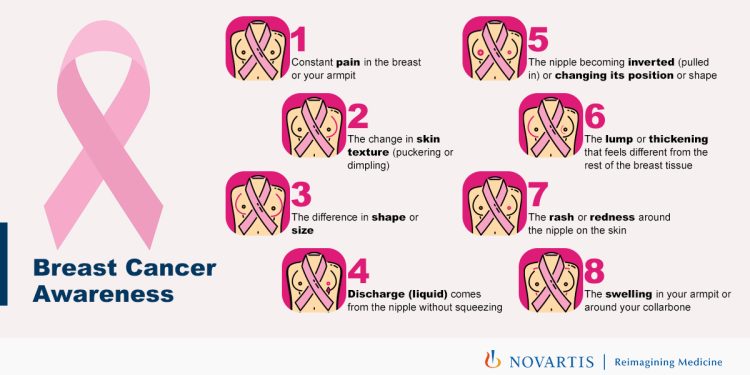Lumps in the breast are the most well-known sign of breast cancer. However, this is not the only sign or symptom you should be cautious of before seeking potentially life-saving early diagnosis and treatment, warn medical experts.
Notably, breast cancer is the most prevalent form of cancer among women both globally and in South Africa, where it represented more than a quarter of all reported female cancer cases in 2020.[1]
Dr. Gary Sopher, Director of Oncology at Novartis South Africa, therefore emphasises that while lumps are a common early sign of breast cancer, there are a range of other symptoms you need to be aware of in order to seek timely medical advice.
“First, it’s important to realise that not all lumps are cancerous, as menstruation, for example, can make the breasts feel naturally lumpy. Additionally, not all breast cancer patients have easily discernible lumps, especially as breast tissue is often quite dense in women below the age of 40 years,” he explains.
“That’s why it’s crucial to remain alert to other common signs and symptoms, and to bring these to your healthcare practitioner’s attention as soon as possible in order to prevent any delays in obtaining treatment, which can significantly improve patient outcomes.”
Breast cancer is the abnormal, malignant growth of tissue, which can form in the breast’s glands, lobules, lobes, and ducts before spreading through the blood or lymph vessels.[2]
In addition to lumps or growths in your breasts, women therefore need to be wary of other common early signs such as a constant pain in your breasts or your armpits, and any swelling or inflammation in your armpits or even your collarbone.
Additionally, keep an eye out for any changes in your skin texture such as puckering or dimpling, changes in the shape or size of your breast, nipple discharge without squeezing, changes in the nipple position or shape, inverted nipples, and rashes or redness around the nipple, he suggests.



































